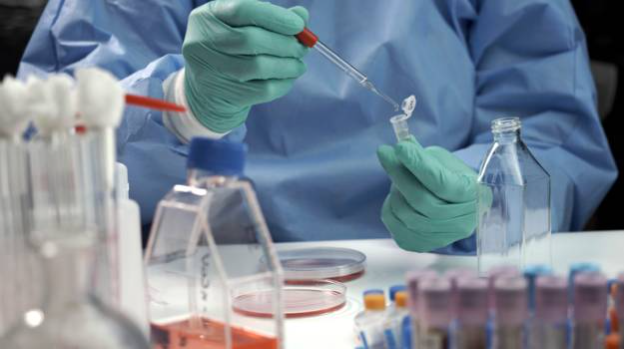The Basics of Virology

Virology is the study of biological viruses. This field of study is a subfield of microbiology and focuses on the classification, structure, and evolution of viruses. It also studies the ways in which viruses are transmitted and exploited. This article will discuss the basics of virology, and provide an overview of some of the major fields of study within this field.
Molecular virology
Molecular virology is a branch of virology that focuses on viruses’ molecular structures. The main tools used to study viruses are sequencers and light microscopes. The techniques include traditional Sanger sequencing and next-generation sequencing. Both techniques are useful for determining the virology of emerging infectious diseases and in testing for drug-resistance. Next-generation sequencing is more widely used and is becoming a central method of viral classification and epidemiology.
This branch of virology focuses on developing novel technologies and strategies to combat emerging viruses. Research on these viruses is vital in advancing our understanding of human diseases. By using this knowledge, we can develop new strategies to control and even destroy virus-infected cells and tissues. Our goal is to prevent the spread of infectious diseases and improve human health.
The main topics covered in this department include the biology and molecular mechanisms of viral infections in animals, humans, and wildlife. The field’s scientists also focus on public health viruses. These include avian influenza, equine herpes viruses, and Norovirus.
The field of virology covers every aspect of viruses: their structure, life cycle, and function. It also covers the immune response to infections caused by viruses, and host defenses against them. Viruses are infectious particles with genetic material that can infect animals, plants, and human cells. Understanding the structure of viruses and their genomes is critical for the study of diseases, classification, and treatment.
Students pursuing graduate degrees in this area should have an interest in studying the role of viruses and bacteria in human health. They can specialize in molecular virology, molecular microbiology, or emerging infectious diseases, and even do research in bioterrorism. The NIH is increasing funding for research into these fields.
The Molecular Virology Laboratory performs HIV replication analysis, reverse transcription, and cell-to-cell transmission. It can also isolate virus from primary infected cells. In vitro infections, RT-PCR, and p24 assays are common techniques used for this. The laboratory also performs immunoprecipitation assays for various HIV proteins.
The program’s seminar series exposes students to cutting-edge research in the field.Management Applications
These seminars also give students a platform to present their work in front of an audience. The weekly Tuesday noon seminar, for example, draws an average audience of 90 people. Similar seminars are held for students in parasitology, bacteriology, and microbiology.
Molecular pathology
The Molecular Pathology Laboratory is part of the Center for Precision and Computational Diagnostics (CPCD). The laboratory offers comprehensive molecular tests to support disease diagnosis, disease monitoring, and therapeutic decision-making. Its extensive testing menu includes assays for common genetic alterations in hematologic and solid tumors. The laboratory also offers an online test guide.
The faculty of the Molecular Pathology section conducts research on diverse topics. Some of its ongoing projects include biomarker discovery in acute myeloid leukemia, molecular pathogenesis of Chagas disease, and HIV and AIDS. In addition, the lab provides translational and clinical research support for various centers and institutes.
The Molecular Pathology Laboratory provides diagnostic services for infectious and genetic diseases. It also develops cutting-edge tests to translate basic molecular knowledge into clinical medicine. It performs over 25,000 tests annually. Its laboratory is certified by the Food and Drug Administration, the New York State Department of Health, the Joint Commission, and the College of American Pathologists.
Advances in NAT have made it possible to identify more viruses as etiologic agents of human diseases. This improves the efficiency of rapid antiviral treatments and reduces morbidity and mortality. Positive viral identification is even more crucial given the increased number of antiviral drugs available. Furthermore, viral load assays are highly effective for monitoring chronic viral diseases.
Viral pathogenesis is an ongoing problem, and studies of viruses are crucial for a better understanding of how the immune system works and what causes disease. Further, the study of viruses can provide new strategies to deal with the most serious human diseases.Types of Microbiology
By understanding the genetics of viruses, we can develop new vaccines, drugs, and treatments.
In addition, newer techniques have improved the reliability and reproducibility of viral tests. Viral load assays, viral subtyping assays, and virus genotyping are just some of the examples of molecular virology. Newer methods, such as high-throughput sequencing, are helping physicians and scientists diagnose and treat viral infections in humans.
In addition to viruses, researchers at MCP also study the human lentiviruses, which are related to the HIV virus. Their work in the Retrovirus Laboratory began with sheep and goat viruses, but turned to human virology in the 1980s. Today, the laboratory has seven full-time faculty members and is a recognized leader in the field. The laboratory is also leading the way in studying the neurologic and other manifestations of HIV disease.
Leave a Reply